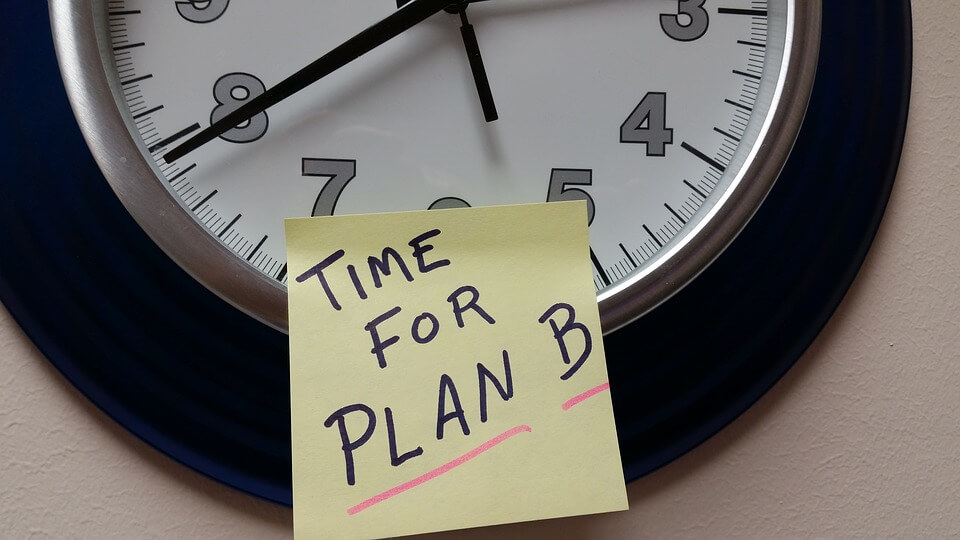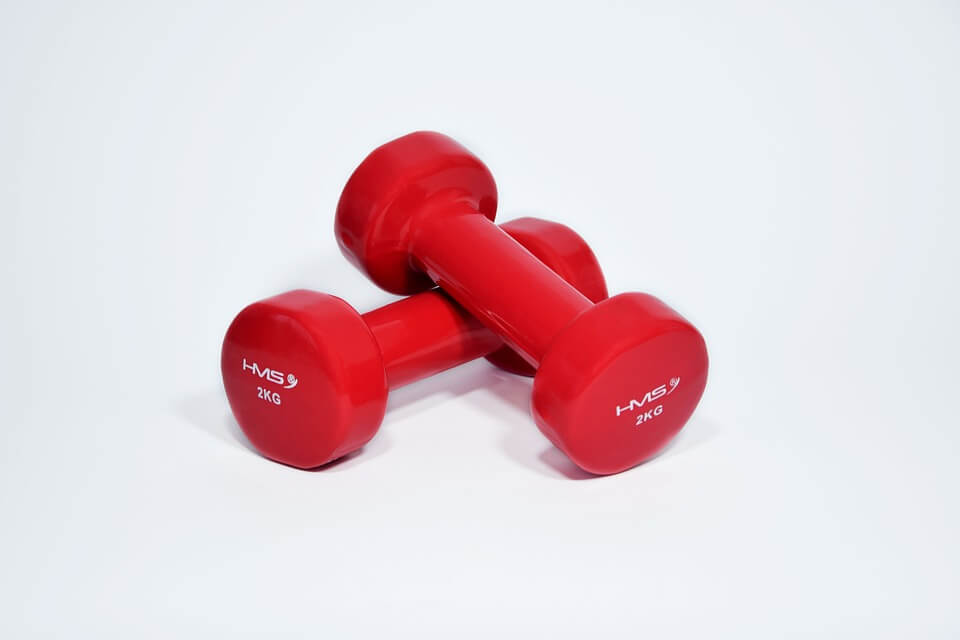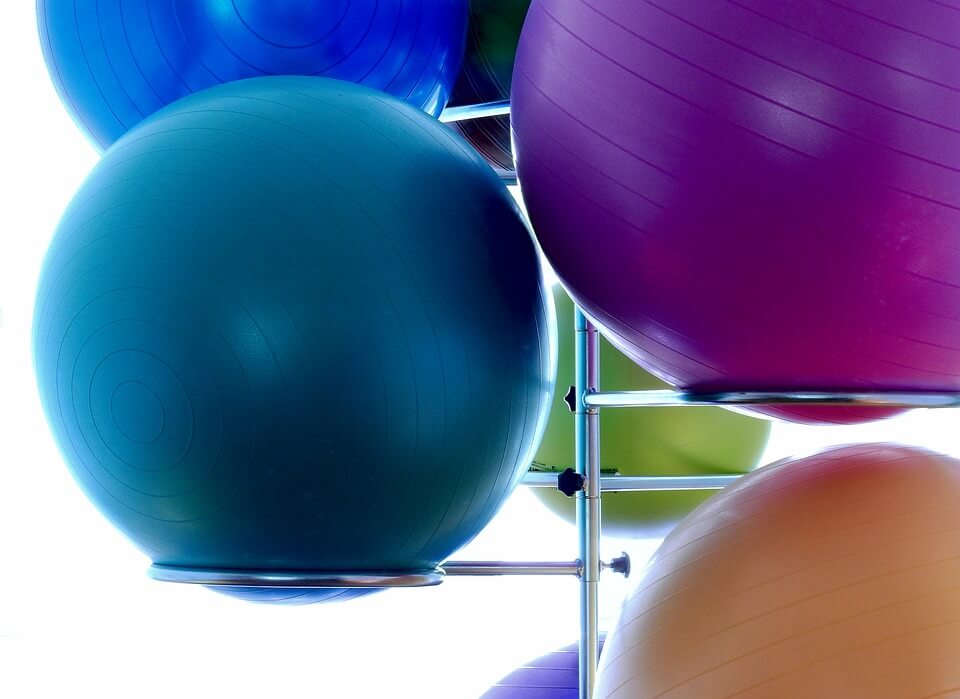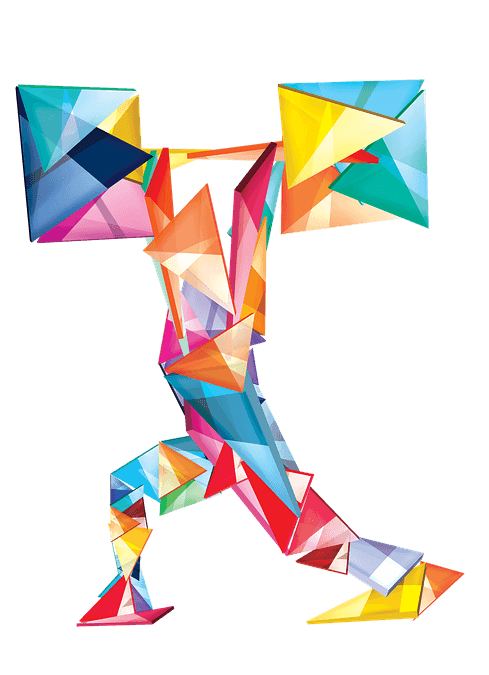Purchasing a few pieces of inexpensive, in-home fitness equipment will change your life.
I’m not exaggerating.
Exercise and nutrition are two sides of the same coin.
If you want to be proactive about your wellbeing and in charge of your health, you can’t have one without the other.
In a perfect world, you would balance exercise and nutrition with ease and little effort. The reality is, you get distracted and sidelined. Your attempts to eat nutritiously and exercise consistently begin to require more effort and less ease.
As a result, you end up abandoning all nutrition and exercise efforts until you begin to feel so physically crappy and mentally guilty that you snap back into action.
What if, rather than discard your workout at the slightest schedule interruption, you could learn to consistently carve out time to maintain it? What if you had a fail-proof backup plan for when life alters your original plan?

WHY YOU NEED A PLAN B
Here are WEEKLY fitness recommendations for adults:
- At a minimum, two hours and 30 minutes (150-300 minutes total) of moderate intensity aerobic activity.
- Two or more days of muscle-strengthening activities. (1)
And you, my fellow breast cancer survivor, have made it your mission to hit those weekly guidelines.
Gym’s have reopened, so you got yourself a membership and made an ironclad commitment to fitness.
Yet even with a gym membership and ironclad fitness commitment, there will be times when you need Plan B.
Here are a few situations where having a Plan B is the ONLY way you’ll fit that workout in:
On those days, access to a few simple, inexpensive pieces of equipment will help you keep your fitness commitment to yourself.

FREE WEIGHTS (Dumbbells)
At their most basic, these inexpensive pieces of equipment help tone and strengthen muscles. If you’re accustomed to using weight machines, note that free weights are more challenging to use.
With a weight machine, you select the appropriate weight, slide a pin into place to secure it, and get started. You may sit, you may stand. Either way, the machine does the work to STABILIZE and SUPPORT your body.
Free weights challenge you to use your muscles and ligaments to do the stabilizing; that’s more challenging. If you’re new to using dumbbells, start with light weight and build up.
Because free weights are so versatile, it makes sense to own a variety of sizes, including the tiny ones.
You may think three-pound weights are useless, but they’re indispensable for a well-rounded workout. For example, performing shoulder exercises with light weights safely works small stabilizer muscles.
Light weights are also perfect for re-building your strength. A 10-pound weight may have felt manageable before your treatment, but now feels impossibly heavy. Starting light helps you safely work your way back to where you were. Don’t forget to check with and get clearance from your doctor before starting ANY post-treatment weight routine.
Lighter free weights help avoid injury when you’re learning a new exercise, because they “stand in” for the heavier version. You can slowly increase to heavier weights once you’ve perfected your exercises using light dumbbells.
There are certain exercises that demand a heavier weight, for example, those that target your back and triceps. As you begin to regain strength, don’t be afraid to lift heavier! Use perfect form and be safe in working back up to using heavy weights; you CAN do it.
Not to mention, the sense of empowerment from lifting heavy stuff is intoxicating.
- Dumbbells are easy to store under a sofa or behind a chair. If you’re a neat freak like me, get yourself a weight rack.
- Weight racks come in a variety of sizes and price ranges. Choose one that allows you to add to your weight collection over time.
- To avoid accidents, don’t leave free weights lying about where someone can trip over them.
- Prices vary, but new dumbbells generally start at about $1.50/pound.
YOGA and/or EXERCISE MAT
Although you could use a yoga mat to exercise and an exercise mat to yoga, in my opinion, it’s best to have one of each.
My weekly yoga class and occasional in-home yoga sessions demand a yoga mat. My in-home workouts and post-run stretching routine call for a cushy exercise mat.
The main difference between a yoga and exercise mat? Stickiness and cushiness. Other considerations for both mat types are cost, material and length.
Yoga Mat Stats
Thickness: Yoga mats are thin enough to allow you to feel a direct connection with the floor. They’re sticky enough to allow you to safely assume poses with bare feet.
A standard yoga mat is ⅛ inch thick, premium yoga mats are ¼ inch thick. If you’re an on-the-go yogi, tuck a 1/16 inch thick travel yoga mat into your carry-on or overnight bag. (2)
While a thicker yoga mat is heaven for your knees, it may cause you to be less stable in balance poses. Less direct contact with the floor can leave you wobbly. If you attend a group class and bring your own mat, note that thicker mats are heavier to schlep.
A good rule of thumb is to buy a yoga mat at least six inches taller than you are. You want to be able to do supine poses and savasana with your entire body on the mat. (3)
Material: Standard yoga mats are made from PVC (vinyl). Natural and recycled rubber, jute, and organic or natural cotton are earth-friendly options. PVC mats are the most economical. Eco-friendly versions land at the higher end of the price range.
Cost: Yoga mats can be had for as little as $7, or upward of $200. Like everything in life, you get what you pay for. If you engage in a regular practice, consider spending more for durability and comfort. (4)
This article focuses on IN-HOME equipment, but when you do head to a group yoga class, I always recommend bringing your own yoga mat. I don’t think I need to remind you why. 😉
Thickness: Exercise mats are ½ inch to two inches thick. Exercise mats absorb shock and cushion your body. They also help to reduce or prevent injuries from slipping, falling or sliding. Choose the thickness that feels best and supports your particular exercise routine.
Material: Exercise mats are made from vinyl, TPE Thermoplastic Elastomer material, or EVA (ethylene and vinyl acetate). Unfortunately, there aren’t many eco-friendly options in this category.
Cost: Varies. You can buy an exercise mat for as little as $15, they go up from there.
One more reason to use an exercise mat, especially if you don’t have carpet; exercise mats help protect your floors from wear and tear. I always set my weights and other fitness equipment on a mat rather than directly on my carpetless floors.
STABILITY BALL
Stability ball, balance ball, exercise ball and Swiss ball; different terms, same piece of equipment.
These large, inflatable balls are versatile and fun. They help train your entire body by supporting a wide variety of exercises. For example, you can work chest and back, core and balance, and do deep stretching through all planes of the body.
Stability balls are available in sizes small (55 cm), medium (65 cm) and large (75 cm).
Choose the proper size for your height. You should be able to sit on the inflated ball with your feet flat on the ground, knees in line with your hips.
Height 5’0” to 5’5” – Small
Height 5’6” to 5’11” – Medium
Height 6’0” to 6’3” – Large
Stability balls generally support up to 300 pounds of weight. Made from anti-burst PVC plastic, there aren’t many eco-friendly options available. Note that most stability balls are latex-free.
Check with the manufacturer of your particular brand to confirm materials used.
Stability balls can be cumbersome to store, but they’re so versatile it’s worth finding space.
Prices start around $20.00, but don’t skimp on quality. A well-made stability ball will last forever. To feel confident using that stability ball for all sorts of exercises, gift yourself with a good one. (5)
Now, tell me in the comments below, which of these pieces of in-home equipment do you own and use often?
______________________________________________
Thanks for reading my blog post!
Most survivors of hormone-positive breast cancer get anxious when they think about what to eat after finishing treatment, so I’ve created the Peaceful Plate program to help survivors eat with peace, not panic.
When you eat with peace, you feel free to enjoy your food again.
Ready to eat with peace?
CLICK HERE and grab your FREE copy of The Five Foods Survivors Should Eat
CLICK THIS LINK and watch my 2-minute Peaceful Plate program video!
Follow me on Instagram @hormone.breastcancer.dietitian
This information is for educational purposes only and is not intended as medical advice. Please consult your dietitian or doctor for guidance specific to your needs.
SOURCES
- Top 10 Things to Know About the Second Edition of the Physical Activity Guidelines for Americans
- HOW TO CHOOSE THE RIGHT YOGA MAT
- The Comprehensive Yoga Mat Guide
- Home Personal Finance Here’s how much you should spend on a yoga mat
- 10 Fun Moves to Reshape Your Body With an Exercise Ball Workout





